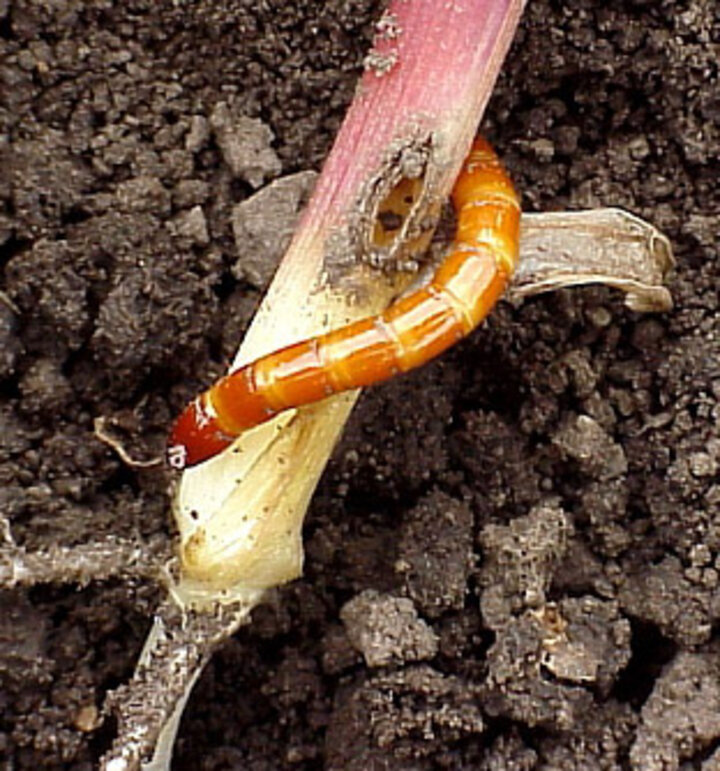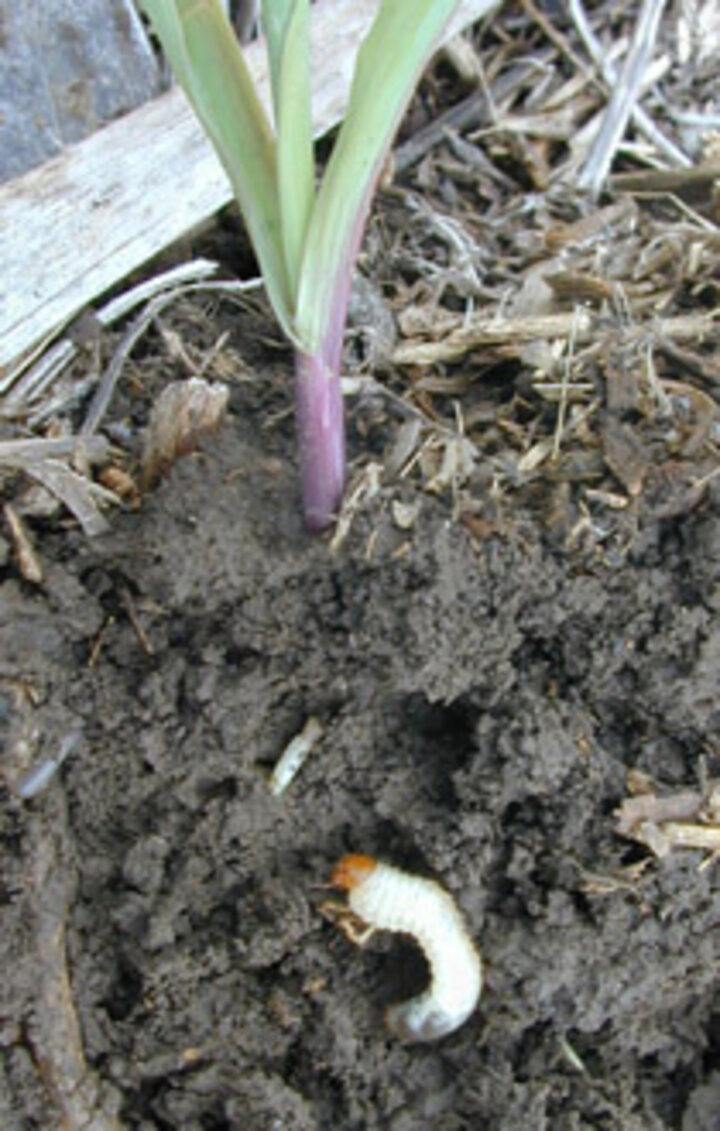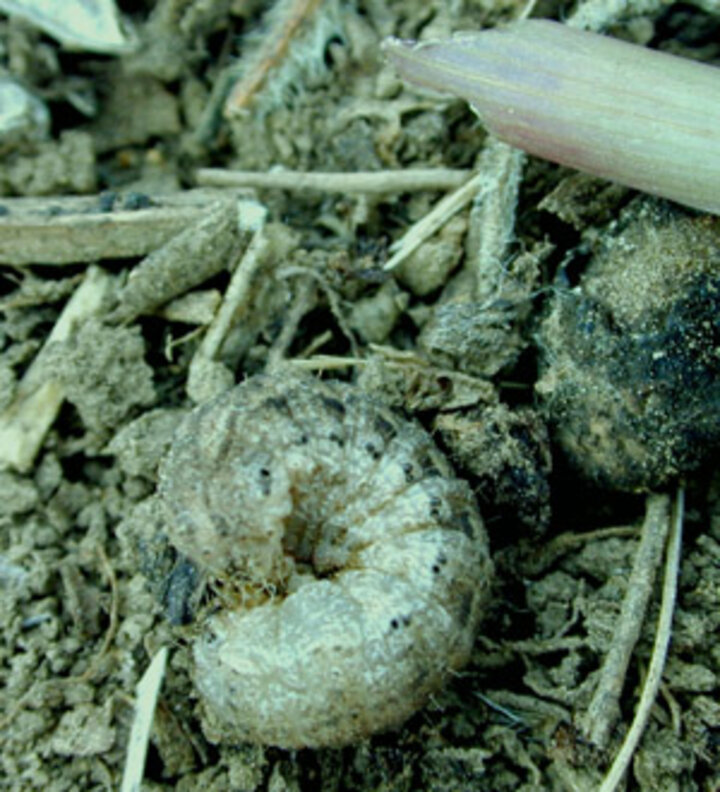May 4, 2007
Most early season damage to corn by insects is caused by wireworms, white grubs or cutworms. These insects often are associated with fields that have been in a pasture or CRP situation previously, where grasses have been allowed to grow for more than one year. It is rare to see these problems in continuous corn, although there are always exceptions to the rule. These insects are underground feeders (wireworms and white grubs) or feed on the surface or below the surface of the soil (cutworms). Detection is based on observation and digging in the soil around the plant.

|
| Wireworm |
Wireworms are the larvae of click beetles. The adult beetles prefer to lay eggs in grasses and the larvae can remain in that stage for up to six years, depending on the species. Wireworms are our earliest corn pests, as they may feed on the seed before germination, causing reduced plant emergence. Later feeding may kill or stunt small emerged plants. All wireworm feeding is done under ground.
Wireworms are white, yellow, orange or brown with hard shells, which give these insects their name. As stated earlier, they tend to be more numerous in fields that have been in grass/pasture or fields that have had grassy weed problems. Wireworms prefer cooler soil temperatures, under 70 degrees, so early planted fields and heavy surface residue fields may have higher risk than tilled fields.
There is no rescue treatment available for wireworms, so farmers with a high probability of problems need to use a planting time treatment to prevent stand reduction. The recent development of seed treatments like Cruiser and Poncho has really reduced the incidence of wireworm damage. They are excellent early season stand protectors. One potential problem with seed treatments is that they are becoming so commonly used that resistance is a possibility. Granular soil insecticides and liquids also work well.
White Grubs

|
| White Grub |
White grub damage to corn may not occur until the corn is in the 2- to 6-leaf stage. This is difficult because up to the time of feeding the stand may look fine. Often grub damage is near shelterbelts where the adults may congregate to feed and mate.
Like wireworms, there is no treatment available to rescue damage from white grubs. Again, high risk areas need to be treated at planting time. Products for white grub control are similar to wireworm control.
If wireworm or white grub damage is serious enough to warrant a replant, use planting time products, although the odds for damage diminish with the warming of the soil.
Scout Emerging Corn for Cutworms
Cutworms and other insects may hinder emerging corn plants this spring even if seed was treated with insecticides or Bt corn hybrids were used. High populations of insects may overwhelm the protection provided by controls, such as insecticides applied at planting time whether liquid, granular or seed treatment or whether it was a Bt corn hybrid. Also, in some cases products are not labeled for the full spectrum of insects we may encounter in Nebraska. For example, Herculex I Bt corn hybrids list black cutworm on the label, but not other soil cutworm species.

|
| Sandhills Cutworm |
Cutworm Treatment Threshold and Recommendations
Generally, a postemergence "rescue" treatment should be considered if cutting is observed on five percent or more of plants and the worms are one inch or less in length.
Rescue treatments are effective in controlling soil cutworms. Ambush 2E, Asana XL, Baythroid, Lorsban 4E, Mustang Max, Warrior, Proaxis, Pounce 3.2EC or other insecticides with similar active ingredients will give satisfactory control as post-emergence sprays. If soil is dry or crusted, rotary hoeing immediately before or after Lorsban application may enhance control. The other insecticides are pyrethroids and should not be incorporated.
More Information
For more information about insecticide products and rates, visit UNL's Department of Entomology Web site at http://entomology.unl.edu. For more information about managing cutworms, consult UNL Extension NebGuide G1153, Corn Cutworms, available online and at local extension offices.
Keith Jarvi
Extension Assistant, Integrated Pest Management
Northeast REC, Norfolk
